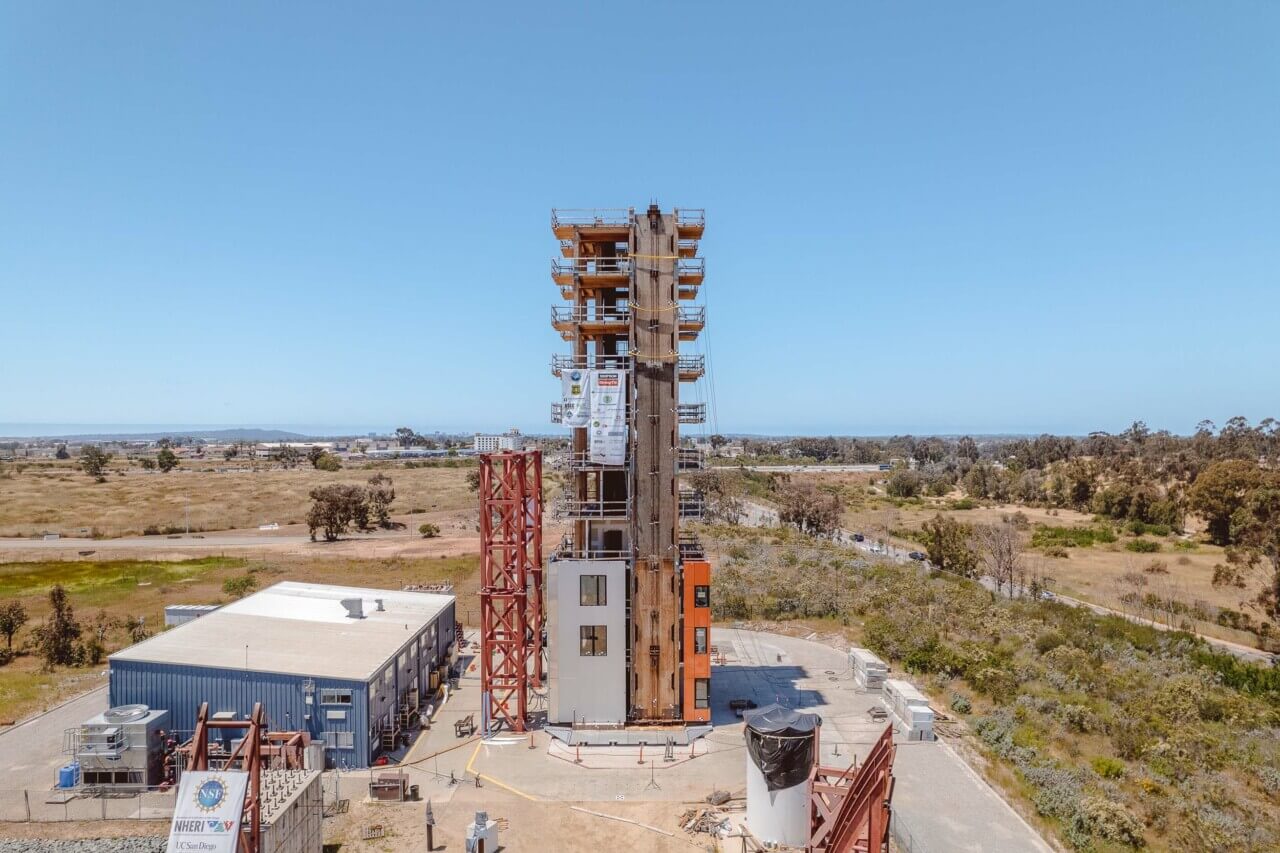On May 9, dozens gathered to watch as a ten-story tower in northeast San Diego juddered and swayed under the forces of back-to-back simulated earthquakes. The building, an experimental mockup of a mass timber tall building, was built atop the Large High Performance Outdoor Shake Table at UC San Diego. The so-called table to which the building is bolted is a 3-foot-thick, 25-by-40-foot steel honeycomb platen mounted to hydraulic actuators. It moves with six degrees of freedom to accurately simulate earthquakes according to seismic records. At the test that day, it ran simulations of the major earthquakes in 1994 in Northridge, California (6.7 magnitude), and 1999 in Chi-Chi, Taiwan (7.7 magnitude). Both times, after a frightening bit of wobbling, the building righted itself back to its initial form and position, with no apparent damage incurred from the shaking.
